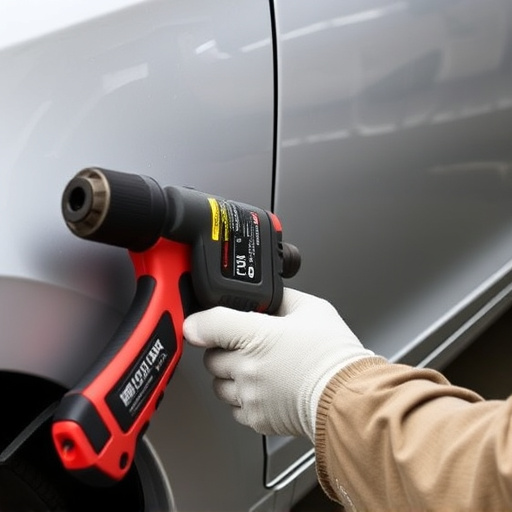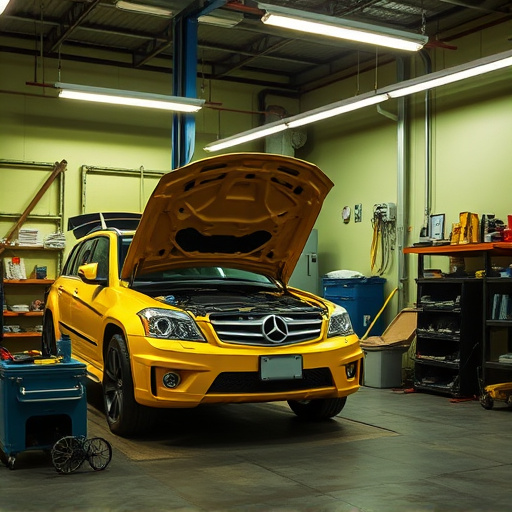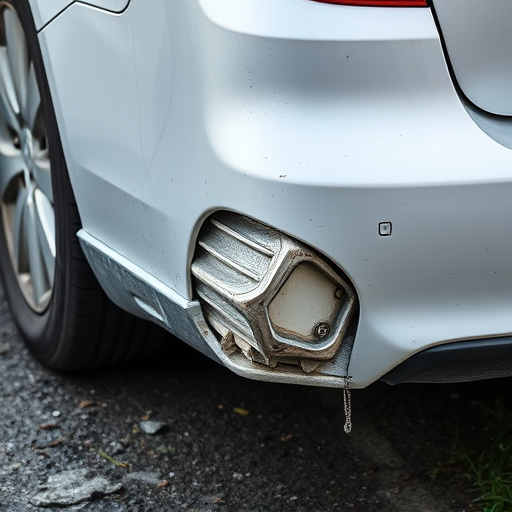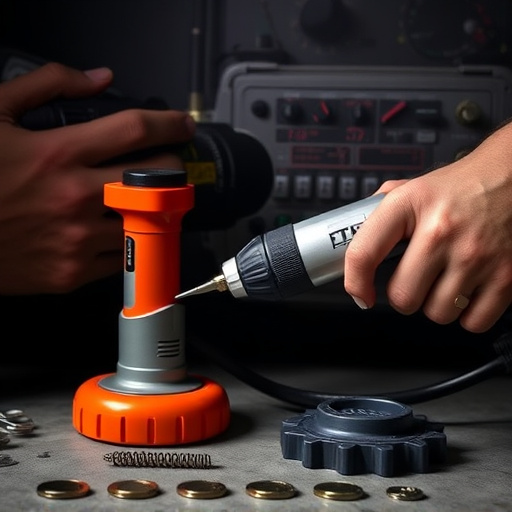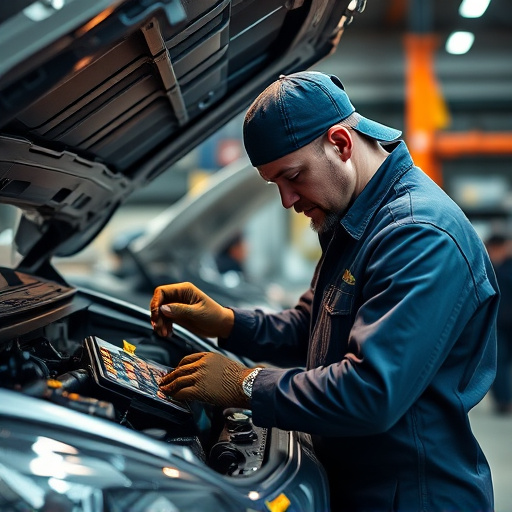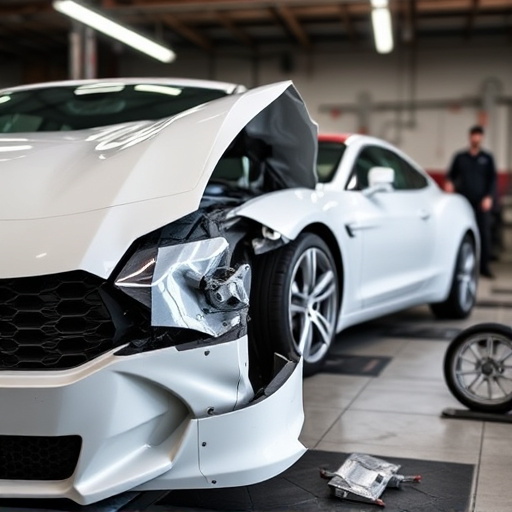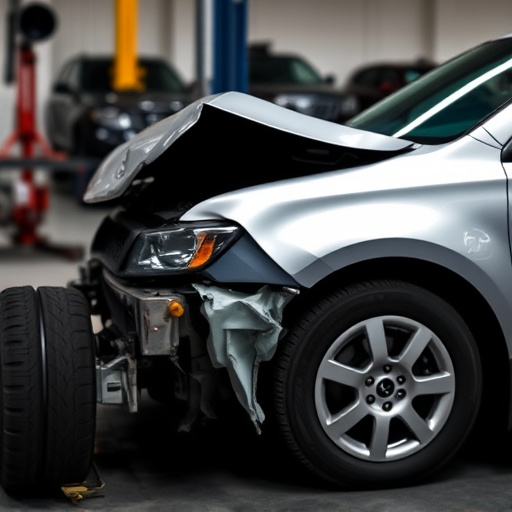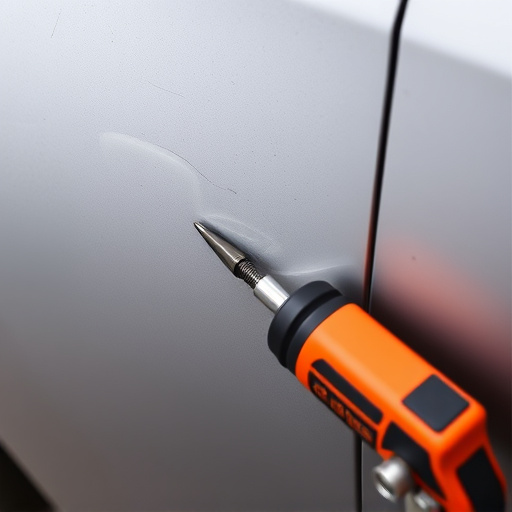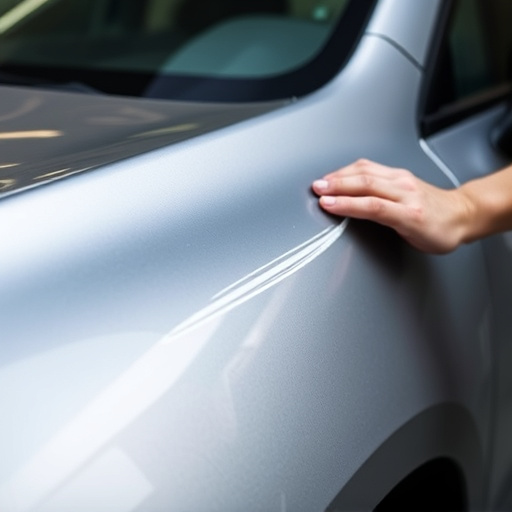TL;DR: Paint finish restoration begins with meticulous damage assessment using visual inspection and advanced tools like XRF analyzers and ultrasonic cleaners, followed by taking surface samples and chemical tests. Based on damage severity (from minor scratches to significant dents), restorers choose repair methods ranging from touch-up painting to complete auto body repainting. Defining the project scope and scale upfront is crucial for establishing a durable, aesthetically pleasing finish that matches original specifications, emphasizing the significance of this step in auto maintenance.
“Uncover the secrets to achieving a flawless paint finish restoration with our comprehensive guide. This step-by-step process ensures your project’s success, from initial assessment to final touches. Begin by meticulously evaluating the surface, identifying damage, and understanding the project scope. Then, prepare your workspace and safety gear. Next, master the art of applying primer and selecting the perfect paint for a seamless finish. Learn techniques for even coating and meticulous touch-ups to achieve a professional, lasting result in your paint finish restoration.”
Assessing the Surface
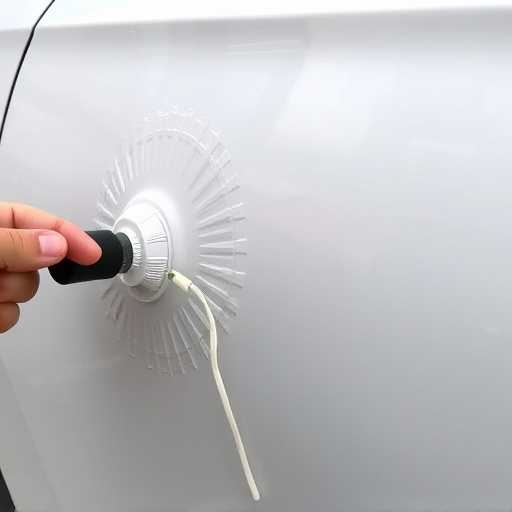
Assessing the surface is a critical step in any paint finish restoration process. It involves meticulously examining the damaged area to understand the extent of the decay and identify underlying issues like rust, pitting, or previous repair work. Skilled restorers use various tools such as magnifying glasses, X-ray fluorescent (XRF) analyzers, and ultrasonic cleaners to detect imperfections that may affect the final result. This detailed assessment is crucial for determining the appropriate restoration techniques and materials required for a flawless finish.
In a car body shop or auto detailing facility, assessing the surface goes beyond visual inspection. It involves taking surface samples, running chemical tests, and analyzing the structure of the existing paint layer to ensure compatibility with new coatings. Auto body painting professionals employ this thorough approach to deliver a durable and aesthetically pleasing finish that matches the vehicle’s original specifications.
– Identifying the type of damage
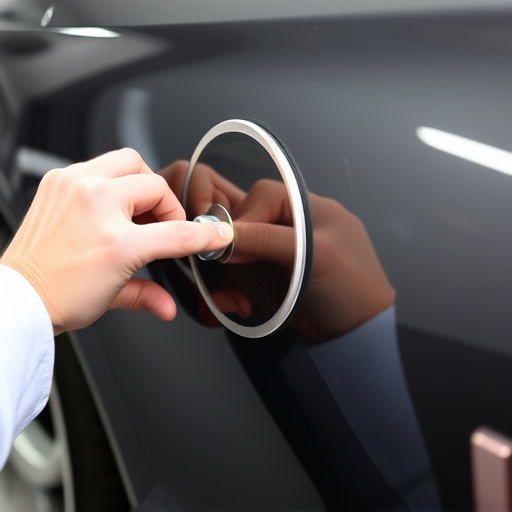
The initial step in any paint finish restoration project is meticulous damage assessment. It’s crucial to identify the specific type and extent of damage before proceeding with repairs, whether it’s minor scratches, chips, or more significant dings and dents. This involves a close inspection using both visual aids and specialized tools to determine the best course of action. For example, an auto painting expert will consider the size, depth, and location of the damage, as these factors influence the repair techniques employed in auto body repair.
Understanding the type of damage is also key for selecting the appropriate materials. In cases of minor scuffs or fade, a simple touch-up might suffice, involving filling, sanding, and repainting specific areas. More severe damage, however, may require complete auto body painting, where the affected panel(s) are completely replaced or extensively repaired before receiving a new coat of paint, ensuring a flawless finish that matches the vehicle’s original paint job.
– Understanding the scope of the project
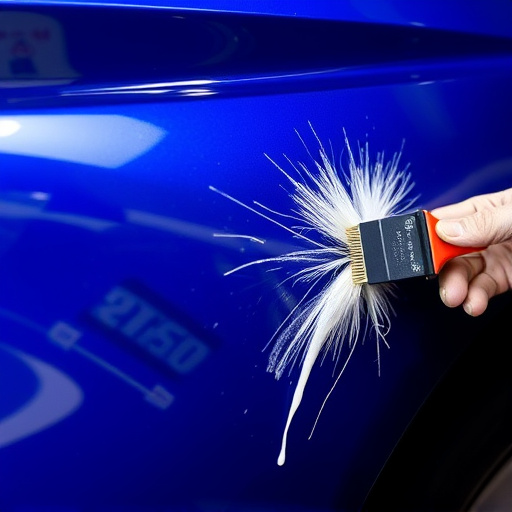
Before diving into the intricate process of paint finish restoration, it’s crucial to define the project’s scope and scale. This initial step in auto maintenance is critical as it sets the foundation for the entire endeavor. It involves meticulously assessing the vehicle’s condition, identifying any existing damage or imperfections, and pinpointing the extent of paint repair needed. A collision repair shop, for instance, would take into account factors like dent removal, scratch repairs, and possibly even complete repainting to achieve a flawless finish.
Understanding the history of the car and its previous repairs is essential in this phase. The goal is to determine if any underlying issues could impact the restoration process or the final outcome. This involves careful inspection using specialized tools and techniques to ensure that the paint finish restoration not only enhances the vehicle’s aesthetics but also ensures long-lasting durability, making it a key aspect of auto repair services.
Restoring a paint finish is an art that requires careful assessment and precise execution. By identifying the type of damage and understanding the project’s scope, you can effectively navigate the process. From assessing the surface to choosing the right materials, each step in the paint finish restoration journey is crucial. Embrace the challenge, and watch as your space transforms into a testament to meticulous craftsmanship.
